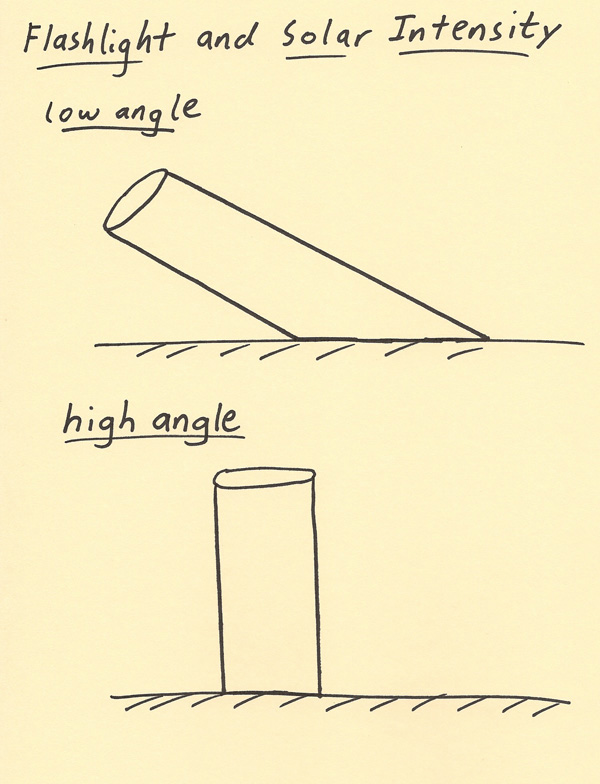
HABYTIME MINI LECTURE 32:
SURFACE SOLAR INTENSITY 1
| |||||||||||||||||||||||||||||||||||||||||||||||||||||||||||||||||||||||||||||||||||||||||||||||||||||||||||||||||||||||||||||||||||||||||||||||||||||||||||||||||||||||||||||||||||||||||||||||||||||||||||||||||||||||||||||||||||||||||||||||||||||||||||||||||||||||||||||||||||||||||||||||||||||||||||||||||||||||||||||||||||||||||||||||||||||||||||||||||||||||||||||||||||||||||||||||||||||||||||||||||||||||||||||||||||||||||||||||||||||||||||||||||||||||||||||||||||||||||||||||||||||||||||||||||||||||||||||||||||||||||||||||||||||||||||||||||||||||||||||||||||||||||||||||||||||||||||||||||||||||||||||||||||||||||||||||||||||||||||||||||||||||||
METEOROLOGIST JEFF HABY
The amount of intensity from sunlight depends on the angle the sunlight is striking the ground. Other factors that influence solar intensity
along with warming of the Earth’s surface are the albedo of the surface, presence of clouds, day length, length the sunlight travels through
the atmosphere, presence of particulates in the air (i.e. dust, ash), and the specific heat of the surface (i.e. water surface, forest,
dry ground). This writing below will focus on angle and solar intensity.
The concept of sun angle and solar intensity can be demonstrated using a flashlight and a table. When the flashlight is used at a low
angle (see diagram below for example), the light is spread out over a greater surface area on the table. This is an analogy for the
situation when the sun is low on the horizon such as around sunrise, sunset and in the winter when the sun tends to be lower in the
sky for a greater amount of time during daylight. When the sun is low in the sky, the intensity of the sunlight is weaker and there
will be less warming of the surface. When going closer to the pole on Earth, the sun angle will be lower in the sky. This is the main
reason higher latitude locations are colder than lower latitude locations. In the equatorial region, the sunlight is close to being
directly overhead around noon. A sun angle that is higher in the sky will produce a more intense sunlight. A high sun angle is better
able to warm the surface effectively. This can be demonstrated by shining the flashlight from directly overhead on the table (see diagram
below for example). Also, by varying the angle the flashlight strikes the table you can see how the intensity changes when going from
low to high angles.

|
|
|

